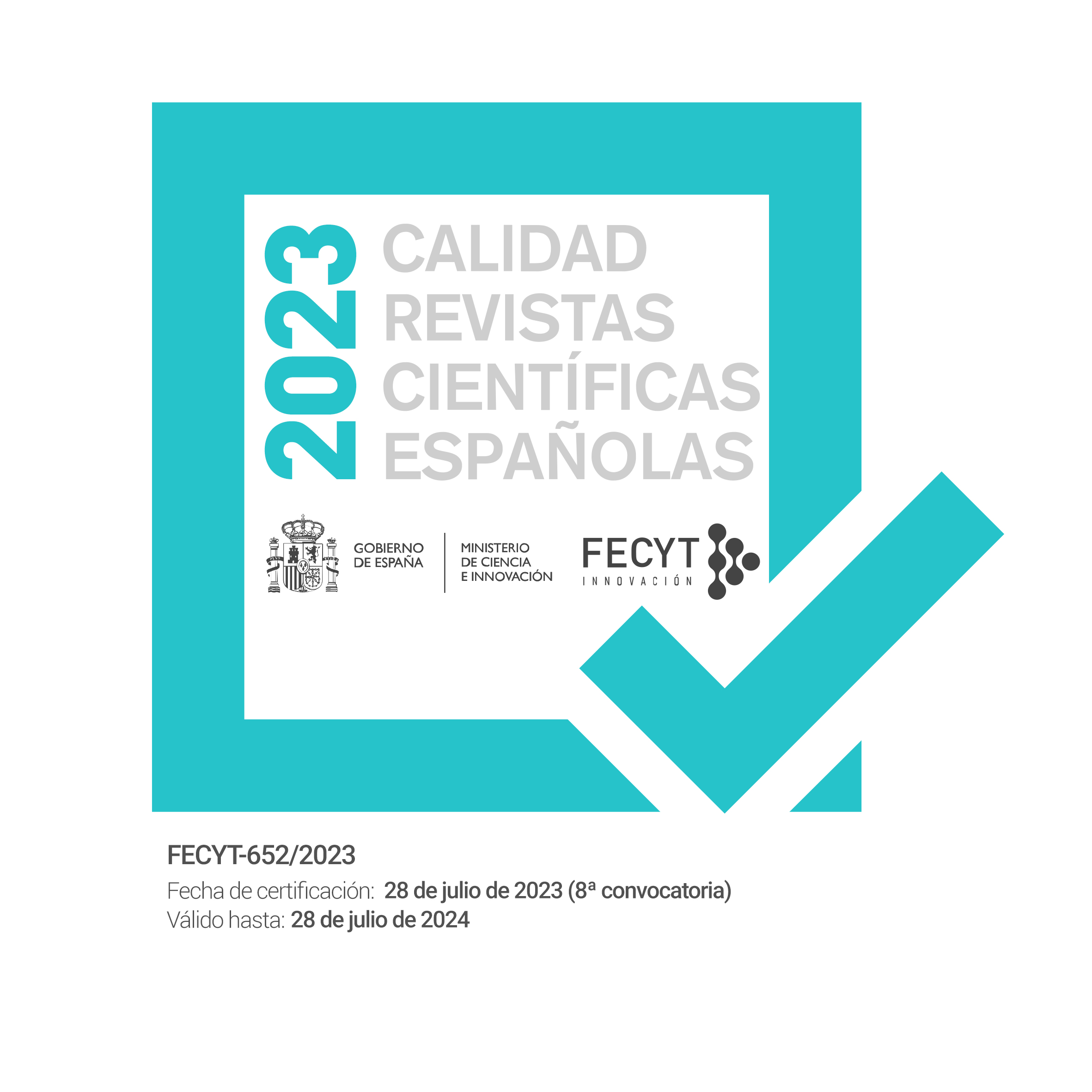The distribution of verbs and verb classes in the English for-dative alternation: A lexico-paradigmatic approach
Abstract
Este artículo explora el papel de los verbos y clases verbales en la alternancia de dativo con for en el contexto del antiguo debate entre enfoques proyeccionistas y construccionistas (o de base sintagmática). Mi principal objetivo ha sido mostrar que un enfoque basado en la alternancia (y más orientado hacia el verbo), donde las «generalizaciones paradigmáticas preceden lógicamente a la interpretación estructural» (Davidse, 1998: 294) y el que también intervienen factores de la estructura de la información, puede ser útil para determinar la distribución de los verbos en la denominada alternancia de Beneficiario, p.ej. Mary carved a toy for the baby/Mary carved the baby a toy (Levin, 1993: 49).La variante de doble objeto puede considerarse una construcción de estructura argumental en sí misma (véanse Goldberg, 1995; Rappaport Hovav y Levin, 1998), si asumimos que la compatibilidad de un determinado verbo con la construcción benefactiva está también determinada por semántica de la clase léxica verbal, como sostiene Croft (2003: 49).
References
Allerton, D. J. (1978). Generating indirect objects in English. Journal of Linguistics, 14, 21-33.
Boas, H. (2011). A frame-semantic approach to syntactic alternations. In P. Guerrero (Ed.), Morphosyntactic Alternations in English: Functional and Cognitive Perspectives (pp. 207-234). Sheffield and Oakville: Equinox Publishing.
Broccias, C. (2013). [Review of Morphosyntactic Alternations in English. Functional and Cognitive Perspectives]. Review of Cognitive Linguistics, 11(1), 215-226.
Colleman, T. (2010). The benefactive semantic potential of «caused reception’ constructions: A case study of English, German, French and Dutch. In F. Zúniga & S. Kittila (Eds.), Benefactives and Malefactives: Typological Perspectives and Case Studies (pp. 219-243). Amsterdam and Philadelphia: John Benjamins.
Croft, W. (2003). Lexical rules vs. constructions: A false dichotomy. In H. Cuyckens, T. Berg, R. Dirven & K-U Panther (Eds.), Motivation in Language: Studies in Honor of Günter Radden (pp. 49-68). Amsterdam and Philadelphia: John Benjamins.
Davidse, K. (1996a). Ditransitivity and possession. In R. Hasan, C. Cloran & D.G. Butt (Eds.), Functional Descriptions. Theory in Practice (pp. 85-144). Amsterdam and Philadelphia: John Benjamins.
Davidse, K. (1996b). Functional dimensions of the dative in English. In W. van Belle & W. van Lanfendonck (Eds.), The Dative, vol 1. Descriptive Studies (pp. 289-338). Amsterdam and Philadelphia: John Benjamins.
Davidse, K. (1998). Agnates, verb classes and the meaning of construals: The case of ditransitivity in English. Leuvense Bijdragen, 87, 281-313.
Davidse, K. (2011). Alternations as a heuristic to verb meaning and the semantics of constructions. In P. Guerrero (Ed.), Morphosyntactic Alternations in English: Functional and Cognitive Perspectives (pp. 11-37). Sheffield and Oakville: Equinox Publishing.
Davies, M. (2008-) The Corpus of Contemporary American English: 425 million words, 1990-present. Available online at http:// corpus.byu.edu/coca/
Gleason, H. A. (1966). Linguistics and English Grammar. New York: Holt, Reinhart and Winston.
Goldberg, A. (1992). The inherent semantics of argument structure: The case of the English ditransitive construction. Cognitive Linguistics, 3(1), 37-74.
Goldberg, A. (1995). Constructions: A Construction Grammar Approach to Argument Structure. Chicago, IL: University of Chicago Press.
Goldberg, A. (2002) Surface generalizations: An alternative to alternations. Cognitive Linguistics, 13(4), 327-356. doi 10.1515/cgl.2002.022
Goldberg, A. (2006). Constructions at Work: The Nature of Generalization in Language. Oxford: Oxford University Press.
Goldberg, A. (2013). Constructionist approaches. In T. Hoffmann & G. Trousdale (Eds.), The Oxford Handbook of Construction Grammar (pp. 15-31). Oxford: Oxford University Press.
Groefsema, M. (2001). The real-world colour of the dative alternation. Language Sciences, 23, 525-550.
Green, G. (1974). Semantics and Syntactic Regularity. Bloomington: Indiana University Press.
Gropen, J., Pinker, S., Hollander, M., Goldberg, R. & Wilson, R. (1989). The learnability and acquisition of the dative alternation in English. Language, 65, 203-257.
Guerrero Medina, P. (forthcoming, 2020). Meaning construction and motivation in the English benefactive double object construction: Verbal and constructional semantics at work. Review of Cognitive Linguistics, 18(1), 94-120.
Halliday, M. A. K. (1967). Notes on transitivity and theme in English 1. Journal of Linguistics, 3(1), 37-81.
Haspelmath, M. (2015). Ditransitive Constructions. Annual Review of Linguistics, 1, 19-41. doi: 10.1146/annurev-linguist-030514-125204
Lakoff, G. & Johnson, M. (1980). Metaphors We Live By. Chicago: IL: The University of Chicago Press.
Lemmens, M. (2006). More on objectless transitives and ergativization patterns in English. Constructions SV1-6/2006. Retrieved from http://www.constructions-online.de, urn:nbn:de:009-4-6802.
Levin, B. (1993). English Verb Classes and Alternations: A Preliminary Investigation. Chicago, IL: The University of Chicago Press.
Levin, B. & Rappaport Hovav, M. (2005). Argument Realization. Cambridge: Cambridge University Press.
Pinker, S. (1989). Learnability and Cognition: The Acquisition of Argument Structure. Cambridge, Mass.: The MIT Press.
Rappaport Hovav, M. & Levin, B. (1998). Building verb meanings. In M. Butt & W. Geuder (Eds.), The Projection of Arguments: Lexical and Compositional Factors (pp. 97-134). Stanford: CSLI Publications.
Shibatani, M. (1996). Applicatives and benefactives: A cognitive account. In M. Shibatani & S. A. Thompson (Eds.), Grammatical constructions: Their form and meaning (pp. 157-195). Oxford: Oxford University Press.
Van den Eynde, K. (1995). Methodological reflections on descriptive linguistics: Knud Togeby’s principles and the pronominal approach. In L. Schøsler & M. Talbot (Eds.), Studies in Valency (pp. 111-131). Odense: Odense University Press.
Downloads
Published
Issue
Section
License
Attribution - Non-commercial (CC BY-NC). Under this license the user can copy, distribute and publicly display the work and can create derivative works as long as these new creations acknowledge the authorship of the original work and are not used commercially.
Authors retain the copyright and full publishing rights without restrictions.









